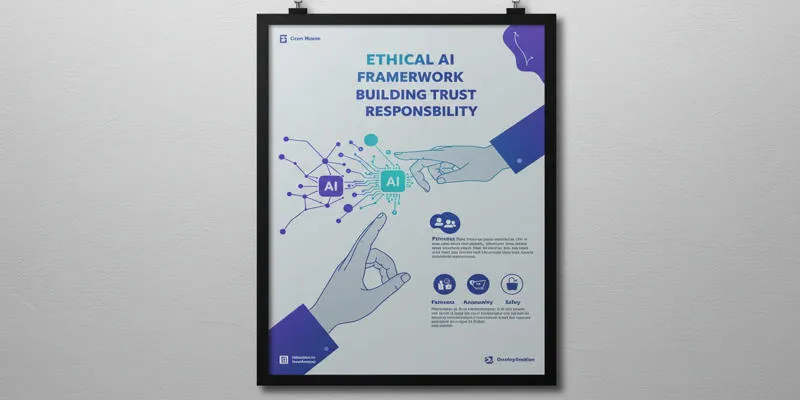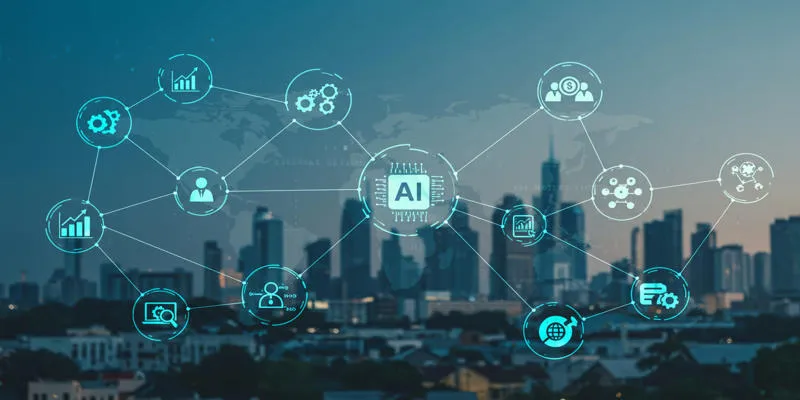AI is revolutionizing the world at an unprecedented pace, enabling smarter work processes, enhanced connectivity, and rapid problem-solving. However, amidst the discussions about its advantages, there’s a crucial yet overlooked issue—the environmental impact of AI. Behind every intelligent device and advanced AI tool lies a system that consumes vast amounts of energy.
This energy consumption results in a growing carbon footprint that poses a threat to our planet’s well-being. As AI becomes ubiquitous in daily life, it is imperative to address a fundamental question: How can we harmonize technological advancements with environmental preservation?
Energy Use Behind AI Systems
AI systems serve as the driving force behind many of the smart tools in use today. Yet, the power required for this intelligence comes with a hidden environmental toll. Large AI models, such as ChatGPT, rely on massive amounts of data and computational power for optimal functioning. Training these models is a time-consuming and resource-intensive process, often spanning weeks or even months of continuous processing on high-performance servers housed in large data centers. These data centers not only require electricity to operate but also to maintain optimal temperatures to prevent overheating and system failures.
The energy consumed to train a single advanced AI model can generate as much carbon dioxide as five cars would produce over their entire lifetimes. Furthermore, each interaction with AI, whether querying a chatbot or receiving personalized online recommendations, leads to additional electricity consumption.
Industries like healthcare, finance, and e-commerce heavily rely on real-time AI processing. To meet the escalating demand, companies operate extensive server farms globally, many of which are still powered by fossil fuels. While progress has been made in adopting renewable energy sources, the environmental impact of AI, particularly its expanding carbon footprint, remains a significant global challenge.
Data Centers and Their Carbon Footprint
Data centers form the core of AI operations, housing thousands of servers responsible for data storage and processing. The electricity consumption of these facilities is substantial, and unless powered by renewable sources, they contribute significantly to greenhouse gas emissions.
Most data centers derive their energy from a mix of sources, including fossil fuels like coal and natural gas, which are major contributors to carbon emissions. While some tech companies are transitioning to renewable energy to power their data centers, the shift is gradual and costly.
In addition to energy consumption, data centers demand large quantities of water for cooling systems, further exacerbating AI’s environmental impact. The surge in AI service demand is driving an increase in data center numbers worldwide, raising concerns about the sustainability of this expansion.
The carbon footprint of data centers varies based on their location, with centers in regions reliant on coal or gas for electricity generation exhibiting larger carbon footprints compared to those in areas utilizing hydropower or solar energy.
The Carbon Footprint of AI Development
The carbon footprint of AI extends beyond data centers to the development process, encompassing the design, testing, and deployment of AI models. Research teams conduct numerous experiments to refine their models, each consuming energy.
Moreover, machine learning necessitates access to extensive datasets stored on servers. The collection, cleaning, and upkeep of these datasets require additional computational resources. The environmental impact of AI development escalates further as companies vie to construct larger and more potent models, which demand more data and computational power, consequently amplifying the carbon footprint.
AI-powered technologies embedded in consumer devices like smartphones, smart speakers, and home assistants also contribute to the environmental footprint. Every search query, voice command, or recommendation processed by AI consumes energy stored in the cloud, with the cumulative carbon footprint increasing as these devices become more prevalent.
The growing recognition of AI’s environmental impact has spurred discussions on responsible AI development. Many experts advocate for evaluating future AI models based not only on accuracy and speed but also on energy efficiency.
Moving Towards Sustainable AI
Mitigating AI’s environmental impact necessitates a blend of technological innovation, policy revisions, and corporate accountability. One promising solution is transitioning data centers to rely on renewable energy sources. Tech giants such as Google, Microsoft, and Amazon have committed to shifting towards 100% renewable energy for their operations. However, smaller firms may encounter challenges related to the cost and availability of renewable energy sources.
Enhancing the energy efficiency of AI models is another crucial step. Researchers are exploring novel algorithms that demand less computational power without compromising performance. Techniques like model compression and knowledge distillation are being employed to reduce the size and energy requirements of AI systems.
Data center design is evolving to embrace sustainability. Some facilities are being established in cooler climates to reduce the necessity for air conditioning, while others are adopting advanced cooling technologies like liquid cooling systems that are more energy-efficient than traditional air conditioning.
Regulatory bodies and governments also play a pivotal role. Establishing guidelines for the energy consumption of AI models and incentivizing investments in green technologies can expedite progress towards sustainable AI.
Lastly, raising public awareness about AI’s carbon footprint is imperative. Users should recognize that every online search or voice command exacts an environmental toll. Encouraging responsible usage can help curtail unnecessary energy consumption.
Conclusion
The environmental impact of AI is an escalating concern that warrants immediate attention. While AI technology delivers convenience and innovation, it also leaves a substantial carbon footprint due to its high energy consumption. The future of AI must prioritize sustainability through the adoption of renewable energy, enhancement of model efficiency, and integration of eco-friendly practices in data centers. Companies, researchers, and users all have a role to play in reducing the environmental costs of AI. By making conscientious choices today, we can ensure that AI continues to enhance our lives without inflicting long-term harm on the environment.
 zfn9
zfn9






















